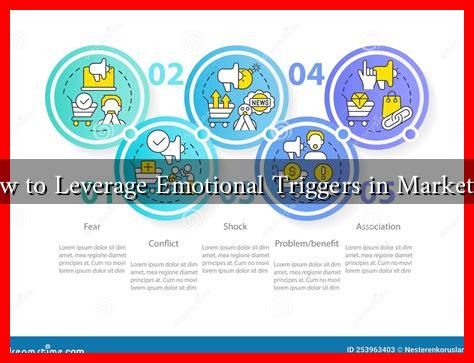-
Table of Contents
- How to Leverage Emotional Triggers in Marketing
- Understanding Emotional Triggers
- Why Emotional Marketing Works
- Strategies for Leveraging Emotional Triggers
- 1. Storytelling
- 2. Visual Content
- 3. User-Generated Content
- 4. Emotional Appeals in Copywriting
- Case Studies: Successful Emotional Marketing Campaigns
- Measuring the Impact of Emotional Marketing
- Conclusion
How to Leverage Emotional Triggers in Marketing
In the competitive landscape of modern marketing, understanding and leveraging emotional triggers can be the key to capturing consumer attention and driving engagement. Emotional triggers are psychological stimuli that evoke feelings, influencing consumer behavior and decision-making. By tapping into these emotions, brands can create more compelling narratives, foster loyalty, and ultimately increase sales. This article explores how to effectively leverage emotional triggers in marketing, supported by examples, case studies, and statistics.
Understanding Emotional Triggers
Emotional triggers can be categorized into several key areas, each capable of influencing consumer behavior:
- Fear: Often used in marketing to highlight potential risks or losses, fear can motivate consumers to take action.
- Happiness: Positive emotions can create a sense of connection and loyalty to a brand.
- Sadness: Evoking sadness can lead to empathy and a desire to help, often seen in charitable campaigns.
- Surprise: Unexpected elements can capture attention and create memorable experiences.
- Anticipation: Building excitement for a product launch can drive consumer interest and engagement.
Why Emotional Marketing Works
Research shows that emotional responses can significantly impact consumer behavior. According to a study by the American Marketing Association, ads that evoke strong emotional responses can lead to a 23% increase in sales compared to those that do not. This is because emotions play a crucial role in decision-making, often outweighing rational thought.
Strategies for Leveraging Emotional Triggers
To effectively leverage emotional triggers in marketing, consider the following strategies:
1. Storytelling
Storytelling is a powerful tool for evoking emotions. By crafting narratives that resonate with your audience, you can create a deeper connection. For example, Nike’s “Just Do It” campaign often features stories of athletes overcoming adversity, inspiring viewers to connect emotionally with the brand.
2. Visual Content
Images and videos can evoke emotions more quickly than text. Use visuals that align with your brand message and evoke the desired emotional response. For instance, Coca-Cola’s holiday campaigns often feature heartwarming family moments, reinforcing feelings of joy and togetherness.
3. User-Generated Content
Encouraging customers to share their experiences can create a sense of community and authenticity. Brands like GoPro leverage user-generated content to showcase real-life adventures, tapping into feelings of excitement and adventure.
4. Emotional Appeals in Copywriting
Crafting copy that speaks to the emotions of your audience can significantly enhance engagement. Use language that resonates with your target demographic. For example, Dove’s “Real Beauty” campaign focuses on self-esteem and body positivity, appealing to consumers’ emotions and fostering brand loyalty.
Case Studies: Successful Emotional Marketing Campaigns
Several brands have successfully leveraged emotional triggers in their marketing campaigns:
- Always: The #LikeAGirl campaign challenged gender stereotypes and empowered young girls, resulting in a 76% increase in brand favorability.
- Google: The “Year in Search” videos evoke nostalgia and reflection, connecting with viewers on an emotional level and reinforcing Google’s role in their lives.
- Apple: Apple’s marketing often focuses on the emotional benefits of its products, emphasizing creativity and innovation, which resonates deeply with its audience.
Measuring the Impact of Emotional Marketing
To assess the effectiveness of emotional marketing strategies, consider the following metrics:
- Engagement Rates: Monitor likes, shares, and comments on social media to gauge emotional resonance.
- Conversion Rates: Track sales and lead generation to determine the impact of emotional campaigns on consumer behavior.
- Brand Sentiment: Use surveys and social listening tools to measure consumer sentiment and emotional connection to your brand.
Conclusion
Leveraging emotional triggers in marketing is not just about creating compelling ads; it’s about building genuine connections with consumers. By understanding the psychology behind emotions and implementing effective strategies, brands can enhance their marketing efforts, foster loyalty, and drive sales. As demonstrated by successful case studies, emotional marketing can lead to significant business outcomes. In a world where consumers are bombarded with messages, tapping into emotions can set your brand apart and create lasting impressions.


